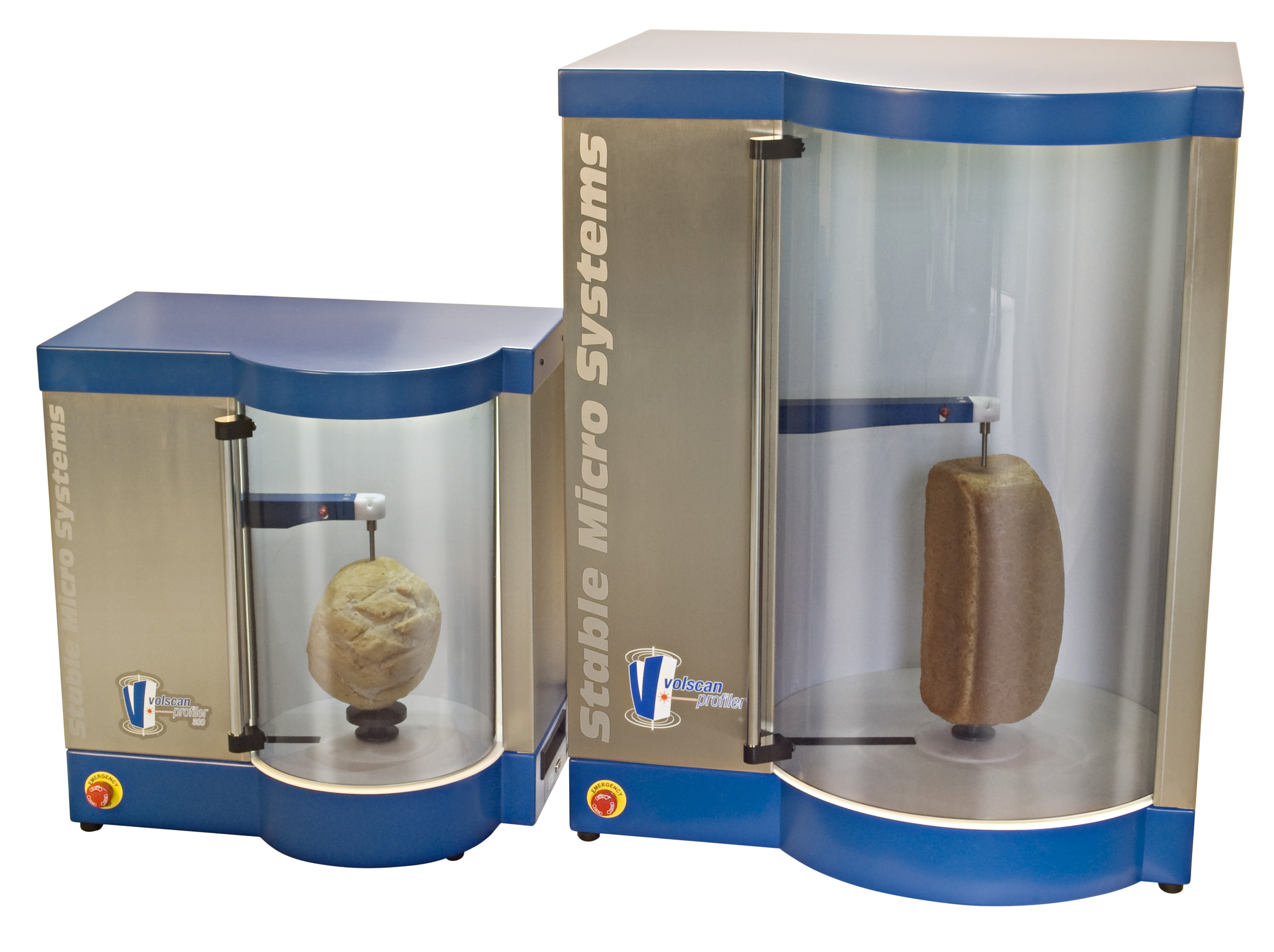Shopping Cart
0 item(s) - Price: EnquireVolume Measurement - Volscan
Loaf volume is the principal component of, and is of paramount importance to, bread quality evaluation.
This is a vital aspect of the consumer's perception of value, because in bread and other leavened goods, higher volume - for the same weight – is invariably associated with more aerated crumb and superior texture.
For a baker or bread manufacturer, each batch of flour has to be evaluated by test baking to ensure that bread is made to a uniformly high quality.
One component of this quality control is measurement of the volume of the bread, which can give information relating to the density of the bread crumb and the strength of the gluten in the flour. Lack of volume generally indicates the use of a weak flour, or one low in enzyme activity. A very strong flour may also produce a loaf of small volume, which would indicate the need for a longer fermentation period during which the gluten would become ripened and so more extensible.
This volume information can then be used to modify the dough mix used in bread production, in order to produce bread of the appropriate quality.
This procedure is important, not only for the inherent qualities of the bread, but to ensure that the selected dough-piece weight produces a loaf of the correct size for the standard tins used in the baking process. The baked product must also be capable of being handled by automatic slicing machines and packed into standard sized bags.
It is therefore important to have a precise and rapid method for the measurement of the volume of bread loaves, enabling control and monitoring of bread-making conditions and manufacturing operations.

Alternative traditional methods
Traditionally, volume measurements have been obtained by the technique of seed displacement, in which the amount of rape seed or pearl barley packing around the loaf in a standard container is measured.
However the following drawbacks which affect the efficiency, accuracy of the measurement and usability are commonly known in the baking industry:
- Repeated calibration necessary
- Operator dependence
- Loss of rape seed due to spillage (and therefore seed all over lab floor)
- Adherence of seeds to the product or to static electricity
- Seed clumping due to moisture absorption
- Periodic sieving of the seed to remove food crumbs
- The potential crushing of freshly baked or soft products
- The inability to test small products (results are reported to be +/-40ml
- The limitation of recording one measurement only (i.e. volume, with no other dimensional analysis)
- Manual recording of results with no digital record

To find out more visit:
Stable Micro Systems - Volscan
Food Tech Solutions are the NZ Distributors for Stable Micro Systems.
Please CONTACT US for Further Information; Test Application Guidance; & Quotes
